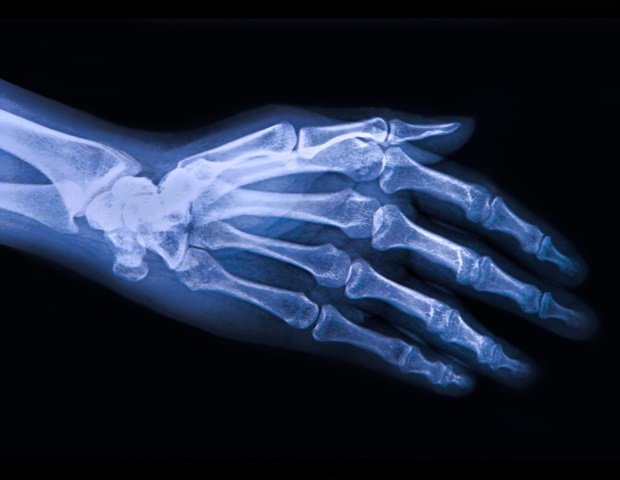In a recent study published in Scientific Reports, researchers evaluated the impact of semaglutide [a glucagon-like peptide-1 (GLP-1) receptor agonist] and tirzepatide [a glucose-dependent insulinotropic polypeptide (GIP) receptor and glucagon-like peptide-1 (GLP-1) receptor agonist] medications on alcohol consumption among obese individuals.
 Study: Semaglutide and Tirzepatide reduce alcohol consumption in individuals with obesity. Image Credit: Skrypnykov Dmytro/Shutterstock.com
Study: Semaglutide and Tirzepatide reduce alcohol consumption in individuals with obesity. Image Credit: Skrypnykov Dmytro/Shutterstock.com
Background
Alcohol use disorder (AUD) contributes significantly to global mortality. GLP-1 and GLP-1/GIP agonists have been authorized by the United States Food and Drug Administration (US FDA) to manage obesity and type 2 diabetes.
Animal studies have reported that GLP-1 agonist molecules can effectively reduce alcohol intake; however, scientific evidence on the impact of GLP-1/GIP agonists on alcohol intake is scarce.
About the study
In the present study, researchers investigated whether semaglutide or tirzepatide medications reduced alcohol intake and the impact of the self-reported effects of alcohol among those consuming the medicines (intervention group) compared to those who were not (control group).
The researchers conducted two studies to investigate the impact of glucagon-like peptide-1 agonists on alcohol consumption. The first research entailed scanning Reddit social media deliberations about GLP-1 agonist medications with a machine-learning-based attribution mapping technique to identify the main themes and alcohol-related postings.
The researchers visualized optimal clusters using the Uniform Manifold Approximation and Projection (UMAP) approach and a random forest (RF)-based binary classifier to comprehend the underlying characteristics and their weights.
The second research included a survey of 153 individuals with a body mass index (BMI) of 30 or higher who drank alcohol and self-documented using tirzepatide or semaglutide for at least 30 days.
The researchers evaluated the subjects’ previous and current self-reports related to alcohol use and its effects. The researchers used the validated remote timeline followback (TLFB) instrument to assess inter-individual variations in alcohol intake.
The team also utilized the binomial distribution of binge drinking to assign individuals a binge drinking score of 0 or 1 (five or more drinks for men and four or more drinks for women).
Furthermore, they investigated ways in which the impact of alcohol use was altered among individuals who were prescribed tirzepatide or semaglutide in comparison to those who were not.
Results
The study examined social media comments about medicine, diabetes, obesity, weight loss, healthcare, and pharmacy. Diabetes, weight, dosage, insurance, and pharmacy were the most weighted features. The majority of alcohol-related entries were over-enriched in two clusters: “weight loss and obesity” (n=439) and “medication effects” (n=826).
In total, 962 individuals made 1,580 alcohol-related contributions, with 72% addressing decreased urges, decreased consumption, and other negative repercussions of drinking. Most positive correlations observed between clusters showed a rise in concurrent talks related to all identified themes.
The most noteworthy negative association was observed between “medication effects,” “insurance and coverage,” and “dose-related” talks, showing a trend away from discussing the effects of drugs and toward seeking information about dosages and obtaining medications via insurance.
The research participants were predominantly white women in their forties, educated for an average of 15 years, and had a BMI of approximately 35. Tirzepatide or semaglutide participants reported median doses of 7.50 mg, whereas the median dose for Wegovy or Ozempic participants was 1.0 mg.
Participants drank much more alcohol on weekends compared to weekdays, and those with obesity taking tirzepatide or semaglutide consumed significantly less alcohol and showed lower probabilities of binge drinking than their non-diabetic or non-obese peers.
AUD Identification Test (AUDIT) scores reduced when individuals began taking their current dose of Tirzepatide or Semaglutide, and drinks per episode of frequent usage decreased dramatically after participants started taking their medication.
There was no dose-dependent change in average drinks or AUDIT scores in the drug groups, although there was a visible downward trend in the Tirzepatide group.
The repeated measures analysis demonstrated a statistically significant main-time impact on stimulative and sedative effects before and during drug administration. The control group differed considerably from the current time point for both drugs, but not from before commencing each medication. The findings indicate that when taking these drugs, the consequences of alcohol intoxication, notably the stimulative and sedative effects, were minimized.
Conclusions
Overall, the study findings provided initial real-world evidence of lowered alcohol intake among obese individuals receiving tirzepatide or semaglutide medicines, showing potential efficacy for AUD treatment among obese individuals.
Furthermore, individuals using Semaglutide or Tirzepatide had a lower mean number of drinks, binge drinking, AUDIT score, and the sedative/stimulating effects of alcohol. The findings add to a growing body of evidence that GLP-1 agonist medicines cause a decrease in alcohol consumption.
Further research, including randomized controlled trials, is required to investigate the therapeutic potential of GLP-1 agonists and GIP/GLP-1 combination medicines for treating AUD.







